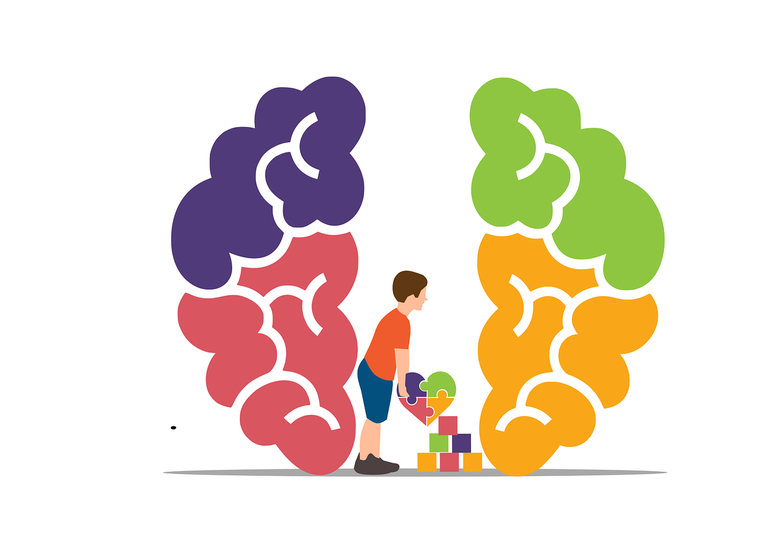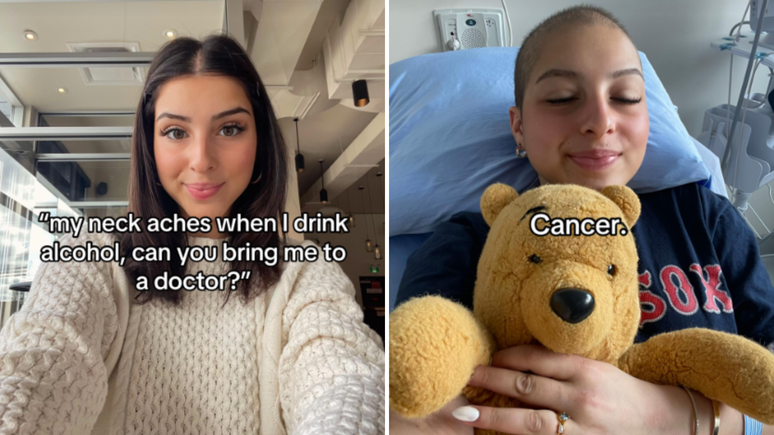In the month of April the UN (United Nations) established that Blue April should be celebrated to raise public awareness of ASD, Autism Spectrum Disorder. According to data released by the Association of Friends of Autistic People (AMA), one in 160 people in the world has autism. Autism was first scientifically documented in […]
In the month of April the UN (United Nations) established that Blue April should be celebrated to raise public awareness of ASD, Autism Spectrum Disorder. According to data released by the Association of Friends of Autistic People (AMA), one in 160 people in the world has autism.
Autism was scientifically documented for the first time in 1943, when physician Leo Kanner published a study describing the behavioral and socialization difficulties of 11 children. In addition to Kanner, other healthcare professionals also contributed to the knowledge of ASD in the 20th century. They were Hans Asperger, Bruno Bettelheim, famous for opera The psychoanalysis of fairy talesMichael Rutter and Lorna Wing.
First analyzes on autism
Each of these researchers sought to understand the causes and consequences of autism. As late as 1943, Kanner believed that ASD was part of childhood schizophrenia. While the psychiatrist Michael Rutter proposed, in 1978, a vision of autism as a unique disorder, different from schizophrenia.
The observation that ASD affects boys more emerged from Asperger’s in an article that became famous in 1981. In other words, it took years of research and thought until a researcher called Lorna Wing observed that autism affects people at different levels and stages. This encouraged the idea of autism as a spectrum.
However, it was not until 2013 that the idea of autism as a spectrum was made public and recognized by the medical community, with the publication of the DSM-5 (Diagnostic and Statistical Manual of Mental Disorders). It took 70 years for this idea to be accepted.
According to the Ministry of Health website, autism spectrum disorder is a “neurodevelopmental disorder characterized by atypical development, behavioral manifestations, deficits in communication and social interaction, repetitive and stereotyped behavior patterns and may present a restricted repertoire of interests and activities,” the institution’s website states.
Levels of Autism – (DSM-5)
In the past, before the publication of the DSM-5, autism was classified by typologies. However, starting with acceptance and understanding as a spectrum, autism has been divided into three levels, which assess the severity of the spectrum. As well as the level of dependency, or support, the person with autism will need.
Level 1
Generally known as the “mildest” degree of autism. In these cases, the child or person with autism has a greater level of functionality and independence, requiring less support or help. Some features:
- Has some communication deficits
- Difficulty initiating social interactions
- Little interest in others
- Inflexible behavior in some situations
Level 2
Level two, considered moderate, is characterized by the fact that the person with autism requires substantial support. Its characteristics are:
- Severe deficits in social skills and verbal and nonverbal communication.
- Greater difficulty in social openings
- Often repetitive behavior
- Inflexibility
- Stress and difficulty changing focus or action
Level 3
Finally, level three is considered severe and is characterized by more severe autism that requires great support. Its characteristics tend to be:
- Severe deficits in verbal and non-verbal communication.
- Very limited social interaction
- Minimal response to social openness
- Extreme difficulty dealing with change
- Great stress
- Lots of repetitive behaviors
Source: Information developed from DSM-5
Labels that are annoying
Based on this information it is possible to imagine some myths and prejudices about people with autism. For example, as we can see, not all people with ASD will have serious communication problems or repetitive behaviors in all areas of their lives. According to Deborah Kerches, pediatric neurologist specializing in autism spectrum disorders and author of the book Understanding and embracing autism spectrum disorder in childhood and adolescence (Literare Books), there are many myths surrounding this condition.
“ASD is an early-onset neurodevelopmental condition that results in different ways a person communicates and relates. And, within this spectrum, there is an infinite number of symptom possibilities, which highlights the importance of fighting the labels and prejudices that, unfortunately, surround this condition, such as “people with ASD have no feelings”, “they don’t have ‘I don’t like having relationships’, ‘making friends’. These ideas must be fought and we do it through information and, above all, respect. Some people with ASD have difficulty identifying, managing and expressing their emotions, but this in no way means that they don’t feel them. There are also those who say that people with ASD live in a world of their own and isolate themselves because they don’t want to make friends.
Different way of living
What actually happens is that he interacts differently with people due to the particularities of his condition, such as language and socialization deficits, which can lead to greater isolation. Precisely for this reason it is important to encourage independence, trust, autonomy and social interactions among children with ASD.
Another widespread myth is that all autistic people have above-average intellectual abilities. Yes, we have fully functional and high performing ones, but this is not the rule. There is a wide spectrum, ranging from severe intellectual disability to gifted cases.
Another mistake is to treat ASD as a disease, talking about ‘cure’. ASD is a condition that accompanies the individual throughout their life, which does not mean that the challenges will always be the same. Treatment is absolutely possible and the more timely and individualized the interventions are, the better the results will be in terms of reducing deficits, increasing potential and improving quality of life”, explains the specialist.
Language of children with ASD
Professor and researcher Silvia Aparecida Canonico, who studies the language of children with autism in the Unesp Gealin group, in Araraquara, states that despite the communication and interaction difficulties in autism, the child or individual with ASD is actually in the universe of language. “If we consider language from a broader point of view, with meanings that are constructed from different modalities of language, such as the use of language, the use of gestures, gaze, actions, which occurs within a routine, according to a context, this child knows language, understands language and senses,” he says.
Furthermore, Silvia states that, in addition to verbal language, it is necessary for parents to also pay attention to non-verbal language, as it is a myth that only speech and language carry signs of ASD. “Before you just think about uttering words or babbling, look at nonverbal cues, such as looking at what your interlocutor is pointing or at when addressing the child, the use of gestures, unique behaviors, such as manipulating or rotating objects and even attachment routines,” he adds.
Source: Terra
Ben Stock is a lifestyle journalist and author at Gossipify. He writes about topics such as health, wellness, travel, food and home decor. He provides practical advice and inspiration to improve well-being, keeps readers up to date with latest lifestyle news and trends, known for his engaging writing style, in-depth analysis and unique perspectives.






![Such an excellent sun in advance: Summary of the episode on Monday, August 25, 2025 [SPOILERS] Such an excellent sun in advance: Summary of the episode on Monday, August 25, 2025 [SPOILERS]](https://fr.web.img4.acsta.net/img/d4/f7/d4f7205d1d5c20b03112603176615360.jpg)


